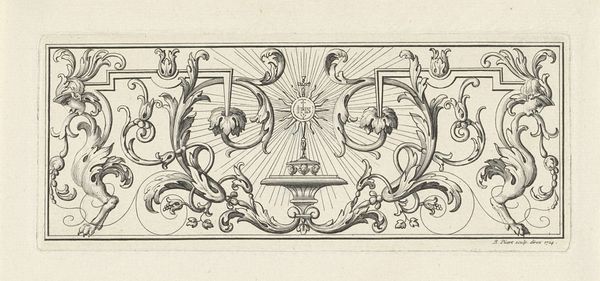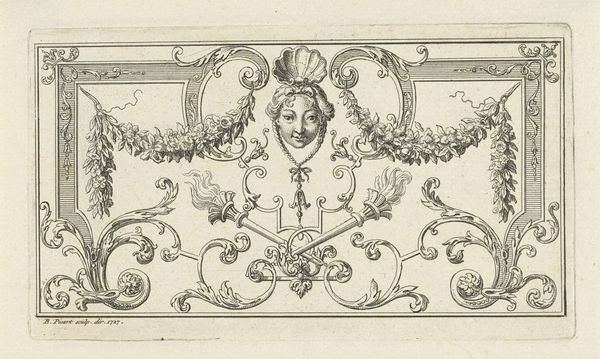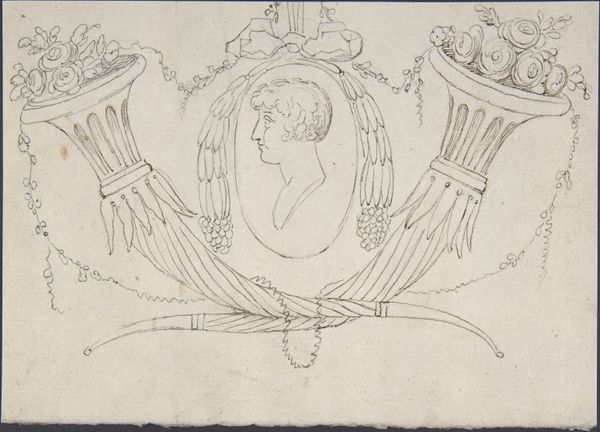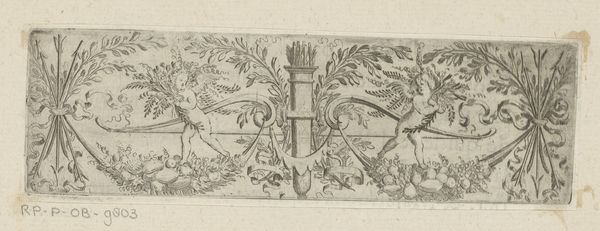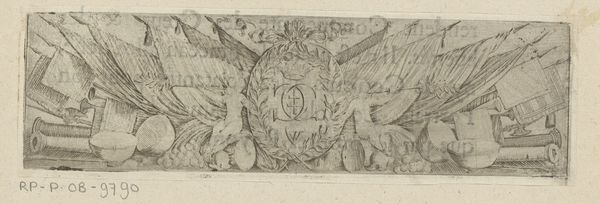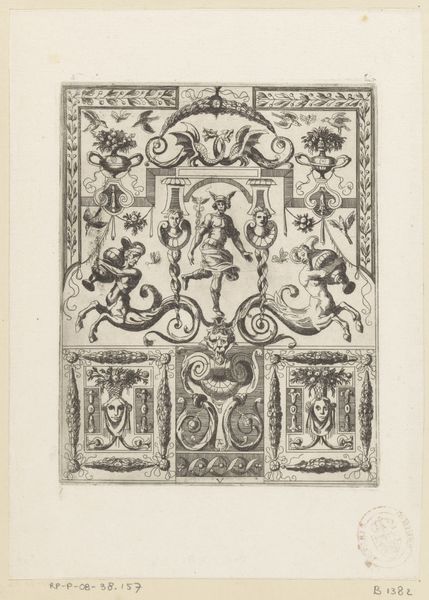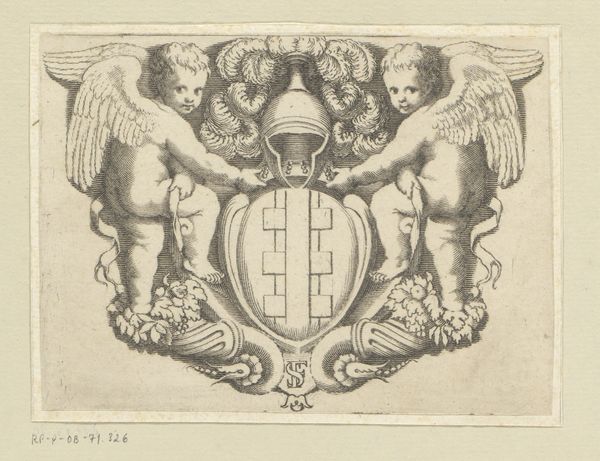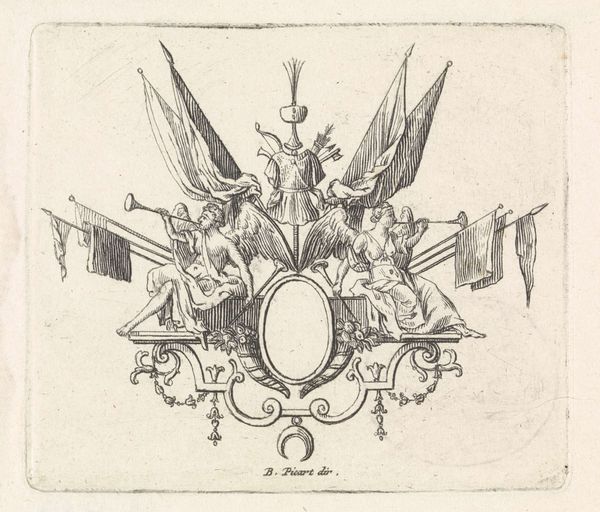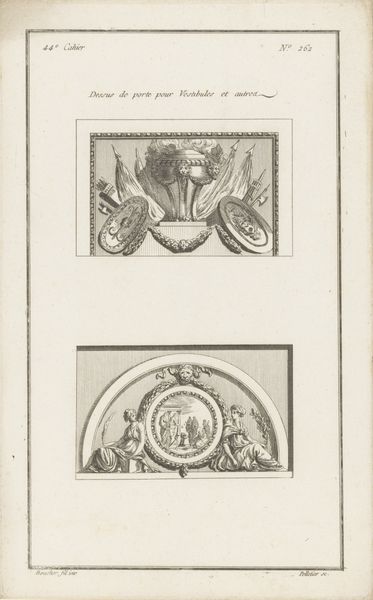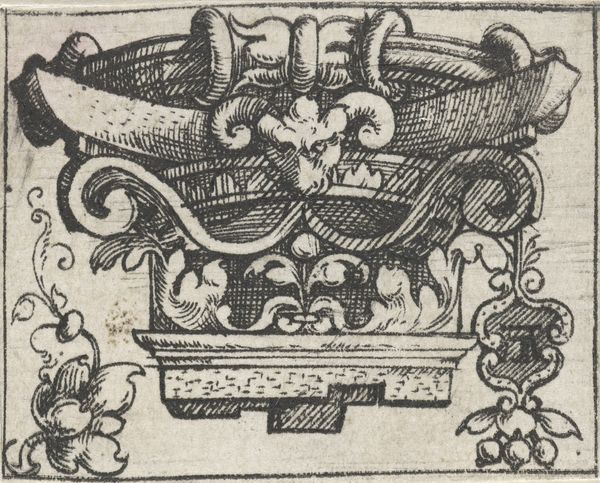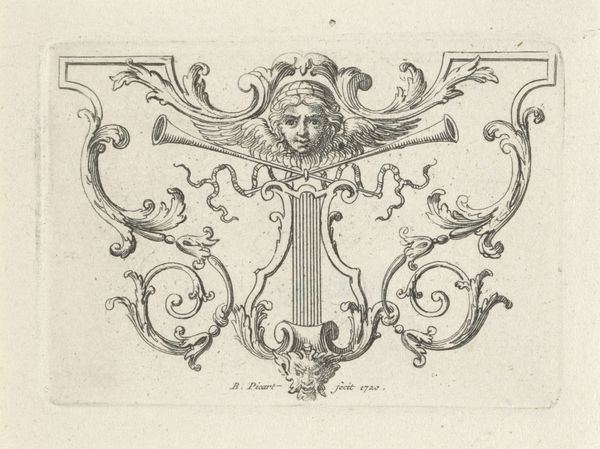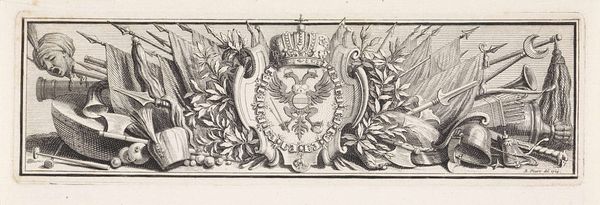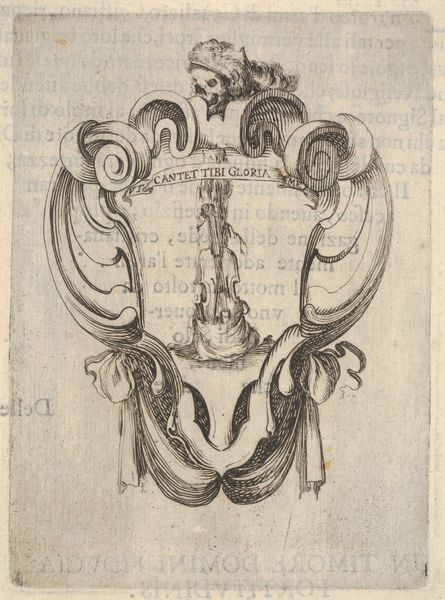
drawing, graphic-art, print, engraving
#
drawing
#
graphic-art
#
baroque
# print
#
engraving
Dimensions: height 65 mm, width 123 mm
Copyright: Rijks Museum: Open Domain
Sébastien Leclerc I created this triangular Cul-de-lampe with monogram of Charles IV using etching techniques. The image is rich with symbols that would have been immediately recognizable to 17th-century viewers. The central monogram, topped by a crown, indicates royal authority and lineage. Flanking the monogram are cherubic figures and eagle-like birds, which might represent divine favor and imperial power. Leclerc was a master of propaganda, and the print can be seen as an effort to legitimize and glorify Charles IV. France in the 1600s was a place of strict social hierarchies, where images played a crucial role in upholding and reinforcing these hierarchies. Artists like Leclerc were often employed by the court and other powerful institutions to create works that promoted their interests. To understand the political and social implications, you could consult period documents, letters, and other archival materials. By situating the artwork in its original context, we can gain a deeper understanding of its meaning and impact.
Comments
No comments
Be the first to comment and join the conversation on the ultimate creative platform.

